
How to Choose the Perfect Rug for Your Home (the only guide you’ll need!)
Need help picking the right rug? Discover sizes, materials, styling tips, and grab your free Rug Buying Checklist in this complete guide.
GENERALBEDROOM
Laiba
6/23/20257 min read
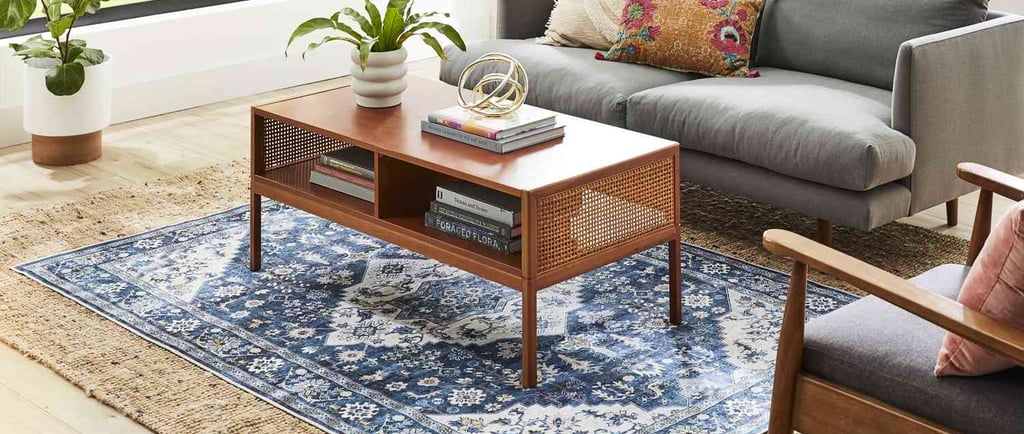

Hey hey! How’s your week shaping up? I’ve been knee-deep in content creation, and one question keeps popping up—How do I pick the right rug for my room? And I get it… Choosing a rug isn’t as simple as grabbing the prettiest one from your feed. Size, texture, color, shape, floor type; there’s a lot to think about.
So today’s Fix Up Friday post is all about rugs: the unsung heroes of every styled space. I’m sharing my go-to guide for picking the perfect one. We’ll talk sizing (no more rugs that look like doormats under your sofa), materials that work with your lifestyle, how to match your rug to your floors and your vibe, plus a few styling tips I swear by.
If you’ve ever stared at a room and thought, “Something feels off,” your rug might be the silent culprit. Don’t worry, I’ve got you. By the end of this post, you’ll know exactly what size, style, and texture your space needs.
Bonus: There's a free printable one-pager at the end!
Start with the Purpose
Before diving into colors and patterns, let’s back up and ask the most important question: What do you want the rug to do? Is it there to anchor your seating area? Add warmth to cold floors? Cover up less-than-lovely tiles? Or perhaps add a splash of personality to a neutral space?
Defining the purpose helps narrow down your options quickly. A cozy bedroom might call for something plush underfoot, while a minimalist lounge may benefit from a sleek, low-pile rug that grounds the space without upstaging it. Think of your rug as a tool, not just a decoration.
Let’s say you want your rug for the entryway hall. In that case, it should be of extra durable material and easy to clean. If it’s inside a bathroom, you’ll need a moisture-wicking material. Your rug should align with how you use the room every day.
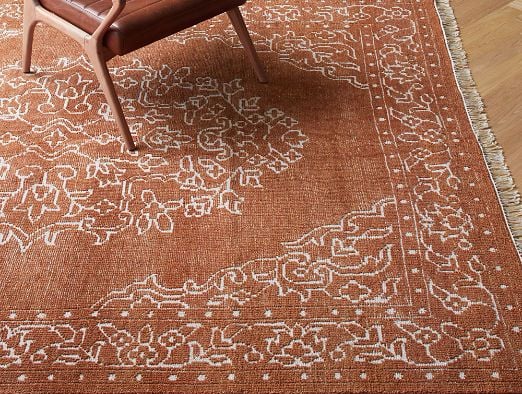

Measure Size Beforehand
Rug shopping without measurements is like trying to hang a picture blindfolded—frustrating and almost always off. The right size can make your space feel intentional and put-together, while the wrong one (too small is the usual culprit!) can throw off the whole room. Before adding anything to your cart, measure your space and take note of your furniture layout.
Here are a few general rug size rules by room:
Living Room:
For larger rooms, go with 8’x10’ or 9’x12’. Aim to have all furniture legs on the rug, or at least the front two legs of sofas and chairs. Leave around 12–18 inches of bare floor between the rug and the wall.
Bedroom:
Use a 6’x9’ for a full bed or 8’x10’ for a queen or king. The rug should extend at least 18–24 inches beyond each side of the bed. (Pro tip: You don’t need the rug to go under nightstands unless you're going full luxe.)
Dining Room:
Choose a rug that's at least 24 inches larger on all sides of the table so chairs can be pulled out without falling off the rug. Most standard sizes are 8’x10’ or 9’x12’, depending on your table.
Entryway or Hallway:
Go for a runner (2’x6’ or 2.5’x8’) for long spaces. For square or open entryways, try a 4’x6’ or 5’x7’. Make sure the rug doesn’t crowd the door, leave enough room for it to open freely. A runner should be centered in the hallway, leaving at least 6 inches of space on either side.
Fix Up Tip: If you’re ever in doubt, size up, not down. A too-small rug is like a too-short curtain—it instantly makes the room feel off.
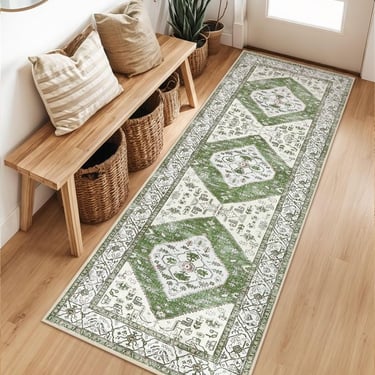
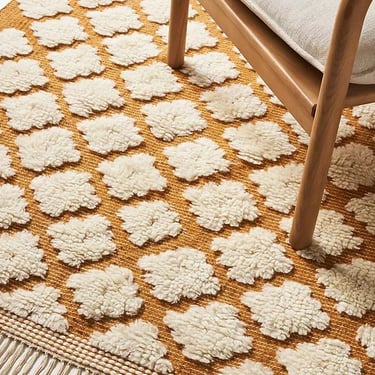
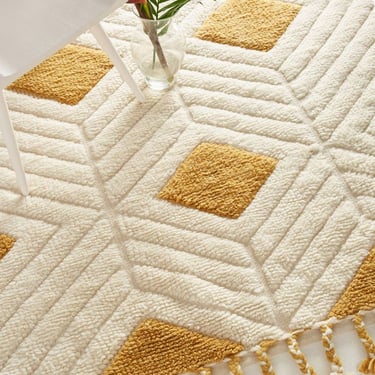
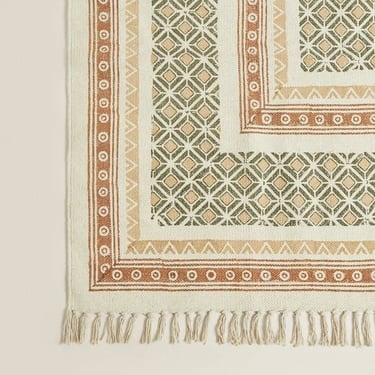
Match the Rug To the Room Type
Not all rugs are created equal and where you place them makes a huge difference. In the living room, your rug should either ground the space or make a bold design statement. Layering a jute rug with a smaller patterned one on top? Chef’s kiss.
Just make sure it’s large enough to hold the front legs of your furniture at a minimum. For the bedroom, comfort is key. You’ll want something soft underfoot—like a plush wool or cotton rug—that extends at least 18 inches beyond the sides of your bed. No one likes stepping onto a cold floor first thing in the morning! In the dining room, function meets style.
Choose a rug that’s low-pile and easy to clean (hello, washable options) and large enough so that pulled-out chairs stay completely on the rug. And for entryways or hallways, think durable and narrow. These are high-traffic zones, so opt for runners that can take a beating, won’t slip around, and can handle shoes, bags, and all the daily action without losing their shape.
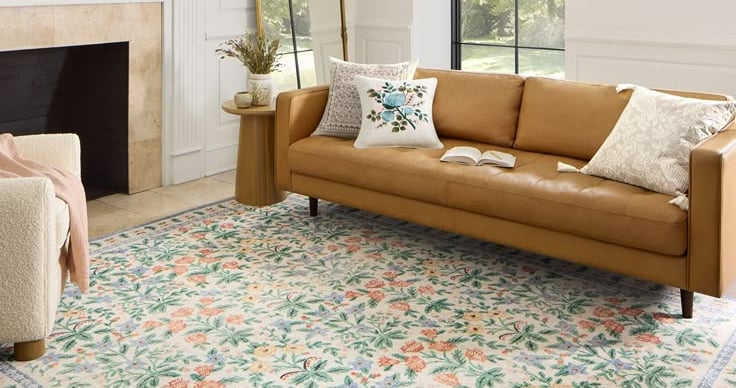

Choose the Right Color & Pattern
Once, my mom brought a plush red carpet for our living room. While it did make the room feel majestic because of its color, it also made it look smaller. We realized the mistake and switched for a neutral beige that better matched our furniture and walls.
And this is exactly what you have to do. You have to stop thinking about just the rug itself and start thinking about how it can complement your surroundings. The key to picking the right color and pattern? Think about your existing furniture and the overall vibe of the room. If your space is already full of texture or color, go neutral with the rug to create balance.
On the flip side, if your room feels flat or too matchy-matchy, a bold rug with pattern or color can instantly liven things up. For small spaces, stick to lighter tones and open patterns to keep the room feeling airy and uncluttered.
And if you’ve got pets or kids, patterned rugs are your best friend—they hide stains and crumbs way better than solid ones. Bonus tip: A rug is the perfect tool to tie together mismatched furniture. Think of it as a visual glue that makes everything feel intentional, even if it was thrifted or pieced together over time.
What Your Rug Is Made Of (and Why It Matters)
Rug material isn’t just about texture; it seriously affects how your rug looks, feels, and holds up over time. If you want something durable and timeless, opt for wool—it’s naturally stain-resistant, cozy underfoot, and exudes a luxurious vibe (yes, even in casual rooms).
Jute and sisal bring an earthy, natural feel and are perfect for layering or grounding busy spaces—but they’re not the softest under bare feet. For something lightweight and easygoing, cotton rugs work great in bedrooms or kids’ spaces, though they may not wear as well in high-traffic zones.
If your home is a pet/kid battleground (no shame), synthetic blends like polypropylene are a solid win—they’re affordable, easy to clean, and often machine-washable. High-traffic areas like entryways or dining rooms? Stick with low-pile or flatweave rugs that can handle life without looking worn out in a week. Low-traffic zones like bedrooms? Go plush and cozy—you’ve earned it.
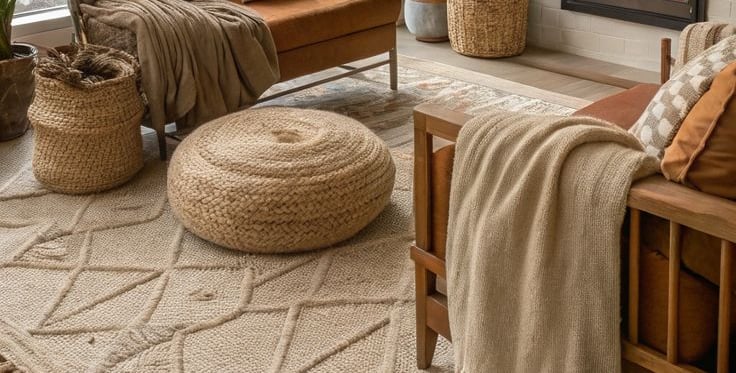

Pick a Rug You Can Live With
Let’s be real—no rug is worth the stress if it’s high-maintenance. Before falling in love with a design, ask yourself: Can I actually keep this clean? If you’ve got pets, kids, or a tendency to eat tacos on the couch (guilty), look for machine-washable rugs or easy-care synthetic blends.
For higher-end materials like wool, spot cleaning is usually the way to go, but they’re naturally more stain-resistant. One thing you absolutely shouldn’t skip? A rug pad. It keeps the rug from slipping, adds extra cushioning, and protects your floors—basically a small investment with big impact. And if your rug keeps sliding around like it’s auditioning for Dancing with the Stars, use anti-slip corner grippers or double-sided tape. Safety and style? Yes, please.
Rug vs. Floor Type
Not all rugs play nice with every kind of floor. Here’s how to choose one that complements—not competes with—your flooring.
Hardwood Floors
Go for woven wool, patterned or textured rugs that contrast subtly with your wood tone.
Avoid rugs that are too close in color to the floor—it all blends into a beige blur.
Fix Up Tip: Cool-tone rugs pair beautifully with warm wood floors, creating balance.
Tile Floors
High-pile or shag rugs add warmth and softness to cold tiles.
Use bold patterns or rich colors to add life to plain tile spaces.
Always add non-slip backing—tile is slippery business.
Fix Up Tip: In kitchens, go for flatweave or washable rugs.
Laminate Floors
Stick with low-pile rugs that won’t bunch or shift.
Laminate can look cold—opt for rugs with texture and warmth (think chunky jute or soft cotton blends)
Carpeted Rooms
Yep, rugs can go over carpet! Choose flat, structured rugs that won’t wrinkle.
Layer for contrast: neutral carpet = go patterned or colored rug.
Use rugs to define zones, especially in open-plan bedrooms or offices.
Fix Up Tip: Stick to low-profile rugs with strong edges—floppy corners look messy over plush carpets.
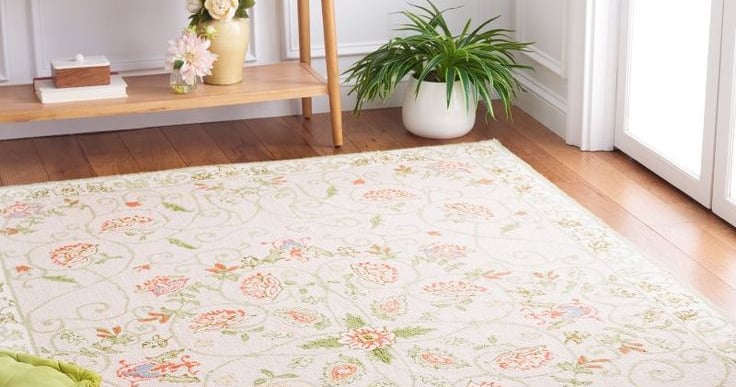

Where to Shop the Best Rugs
Ruggable
Wayfair
IKEA
Local thrift/online marketplaces
Are you worried that you can’t retain that much info? Don’t worry, ladies! I’ve put together a free, one-page Rug Buying Checklist that covers everything you need to know—standard sizes by room, the best materials for your lifestyle, and which rugs work with different floors. It’s quick, printable, and designed to save you from second-guessing.
📥 Grab it here and thank yourself later!
Anyway, these are just my thoughts. You do You! Until next Friday :)
